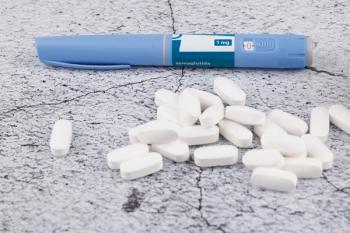
Hospital-Pharmacy Relationship Drives Generic Drug Use
Researchers explored how relationships between physicians, pharmacists, and patients are associated with the use of generic drugs in Japanese pharmacies.
Relationships between pharmacies and hospitals significantly influenced generic drug (GE) utilization, according to a study published in BMJ Open.1 Researchers of the study identified specific interactions within these relationships and found they significantly impact medication dispensing decision making.
“The adoption of generic drugs (GE) as a cost-effective alternative to brand-name medications plays a crucial role in reducing health care costs and improving access to treatments,” wrote the authors. “However, the complex interactions between physicians, pharmacists, and patients in the adoption of GE remain incompletely understood, particularly within Japan’s distinctive health care system, where medication decisions are often made collectively.”
According to the University of California Health Net, 80% of prescription drugs filled in the US are for GEs, while these drugs are typically up to 85% less expensive than brand-name counterparts.2 Japan, where the current study was conducted, has seen similar statistics regarding the generic or brand-name drugs they typically dispense, with around 80% of all drugs in Japanese pharmacies being GEs.3
READ MORE:
When it comes down to choosing the correct prescription drugs for the appropriate patient populations, the main dilemma comes down to choosing between GEs and brand-name drugs. While branded drugs are typically well-known products used by millions prior, GEs provide a cheaper alternative for a product known to be just as effective as the branded option.
In 2019 alone, these less expensive alternatives saved the US health care system over $300 billion.4 However, the current study was conducted in Japan, where complex clinical decision-making is employed and the relationships between pharmacists, physicians, and patients can significantly inform the use of GEs.
“This study examines how the relationships among these key stakeholders associate with GE utilization in Japan, offering insights that can inform practices aimed at promoting more efficient medication use,” wrote authors of the study.1
To understand the complex interplay of GE dispensing in Japan, researchers examined the relationships between physicians, patients, and pharmacists. Their goal was to provide new insights into health care relationships, separating prescribing and dispensing and the roles involved in each. Researchers conducted their observational study using longitudinal medical claims data spanning from April 2015 to March 2021.
“To quantify GE utilization, we employed the ‘quantity share of GE’ metric as defined by the Ministry of Health, Labour and Welfare. This metric is calculated by dividing the quantity of GE dispensed by the total quantity of both GE and the corresponding brand-name drugs eligible for substitution,” they continued.1
After collection, researchers gathered a dataset containing a total of 69,395 pharmacies and 322,097 records throughout the 6-year period. They also developed 2 separate measures to account for hospital and patient concentration rates.
“The HC rate is defined as the proportion of a pharmacy’s annual prescriptions sourced from the most frequent hospital,” the authors wrote. “On average, this rate was 74.7%, underscoring the significant prevalence of hospital-based pharmacies in Japan. Conversely, the patient concentration rate, calculated from the annual prescriptions of the top 5% of patients by volume, averaged 6.2%.”
Using all pre-determined measurements, the researchers found that GE use increased in pharmacies with higher hospital concentration rates, decreasing with higher patient concentration rates.
“Our findings reveal an unexpected and robust positive relationship between hospital prescription concentration and GE utilization, challenging assumptions stemming from recent policy shifts towards patient-centered pharmacy models,” continued the authors.1 “Pharmacies that receive a higher proportion of prescriptions from a single medical facility demonstrate a greater tendency to dispense GE.”
Researchers discovered that many pharmacies in Japan rely on hospitals as a source of dispensing GEs. They also found that this reliance is more significant in smaller pharmacies, underscoring the need for more interoperable interactions between health care entities. As policy trends and more have potential to impact GE utilization, researchers are dedicated to increasing the evidence regarding relationships within health care, in turn, improving overall efficiency.
“Policymakers must carefully weigh immediate cost efficiencies against long-term research incentives when designing GE promotion strategies,” they concluded.1 “As health care systems globally face the challenge of balancing cost-effectiveness with quality, the insights gained from this study can help shape evidence-based strategies to enhance GE utilization and improve overall health care efficiency.”
READ MORE:
Don’t get left behind: Sign up today for our
References
1. Fujimoto A, Fu R, Noguchi H, et al. Breaking brand: an observational study on pharmacy-hospital-patient relationships and generic drug utilisation in Japan. BMJ Open. 2025 May 21;15(5):e093601. doi: 10.1136/bmjopen-2024-093601.
2. Facts about generic drugs vs. brand-name drugs. University of California Health Net. Accessed May 27, 2025. https://uc.healthnetcalifornia.com/health-wellness/generic-drugs.html
3. Mukaide T, Nakahashi M. Bridging the gap: going overseas to ensure a stable supply of generic drugs in Japan. Meiji Group. July 2023. Accessed May 27, 2025. https://www.meiji.com/global/wellness-stories/bridging-the-gap.html
4. Guy AB. Generic drugs: Are they on a par with pricier brands? UCSF Magazine. 2022. Accessed May 27, 2025. https://magazine.ucsf.edu/generic-drugs-are-they-par-pricier-brands
Newsletter
Pharmacy practice is always changing. Stay ahead of the curve with the Drug Topics newsletter and get the latest drug information, industry trends, and patient care tips.





























































































































